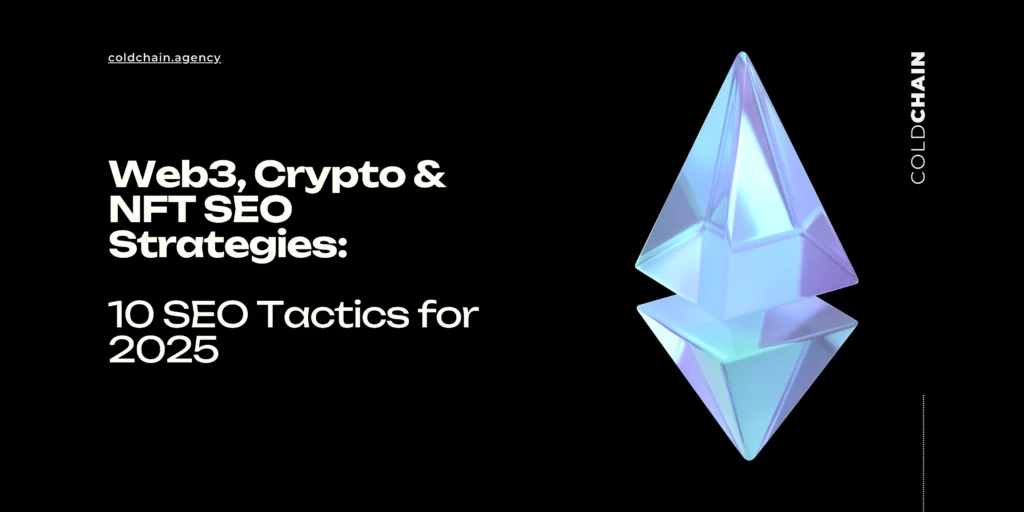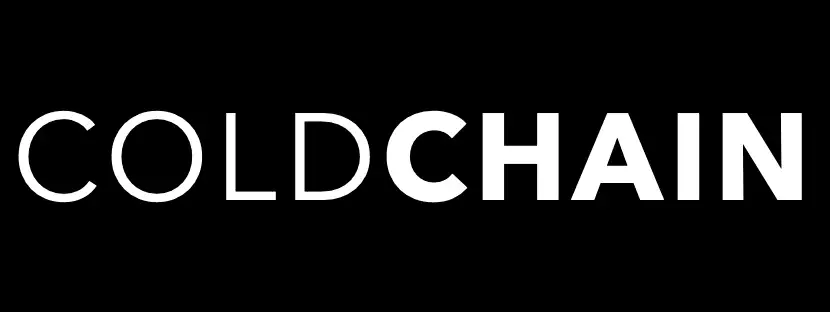With more decentralised platforms, attention towards crypto, and blockchain, visibility and discoverability grows increasingly harder. Is this guide, we will outline 10 tactics that your project, dApp, or protocol can utilise for SEO growth.
Looking for a Crypto SEO Agency?

SEO, shaped by the centralised structures of Google, Bing, and other established platforms, relies on factors such as backlinks, domain authority, and content saturation. In the decentralised world of Web3, visibility is earned through community engagement, technical transparency, and relevance within niche ecosystems – on top of ‘traditional’ SEO methods. To thrive in this space, projects must adopt new, and tested strategies that reflect the values and architecture of Web3.
This guide outlines ten essential SEO tactics tailored specifically for Web3 projects in 2025. These methods are designed to improve discoverability across decentralised platforms, ensure compatibility with emerging AI-driven search engines, and connect with blockchain-native audiences through authentic, data-driven, and community-oriented efforts.
Let’s unlock SEO for your project.
Web2 SEO vs Web3 SEO: A Clear Distinction
The transition from Web2 to Web3 has brought with it a complete overhaul of how online content is ranked, discovered, and interacted with. In Web2, search engines are centralised and operate based on proprietary algorithms designed to maximise user engagement and advertising revenue. In contrast, Web3 is decentralised, privacy-focused, and community-driven, with search engines that rely more on transparent protocols, on-chain activity, and direct community contributions.
The table below outlines some of the core differences between these two models:
| Feature | Web2 SEO | Web3 SEO |
|---|---|---|
| Search Engine Platforms | Centralised (Google, Bing, Yahoo) | Decentralised (Presearch, Yup, Lens Protocol) |
| Content Ownership | Owned by publishers or platforms | Owned by creators and users, verified on blockchain |
| Ranking Signals | Backlinks, keyword density, domain authority | On-chain activity, token ownership, smart contract interactions |
| Keyword Strategy | Broad, general keywords aimed at mass audiences | Niche, blockchain-specific long-tail keywords |
| User Identity | Based on cookies, logins, email | Based on wallets and decentralised identifiers |
| Content Discovery | Algorithmic recommendations and ads | Token-gated content, DAO-driven promotion, community shares |
| Hosting Environment | Centralised servers (e.g., AWS) | Decentralised storage (e.g., IPFS, Arweave) |
| Monetisation Methods | Advertising, affiliate programmes | Token rewards, NFT access, staking incentives |
| Analytics Tools | Google Analytics, Facebook Pixel | Dune Analytics, The Graph, wallet-based tracking |
| Trust and Verification | HTTPS, security badges, domain age | Smart contract audits, open-source code, DAO governance participation |
Understanding these distinctions is the first step in rethinking your strategy for long-term visibility and authority in the decentralised ecosystem.
1. Use Blockchain-Specific, High-Intent Keywords
In the Web3 environment, users are typically more technically informed and purposeful in their searches. Instead of broad queries like “best crypto wallet,” they are more likely to search for specific terms such as “hardware wallet with multisig support for DAOs” or “low-gas NFT minting on Layer 2 networks.”
To capitalise on this, projects must invest time in researching and targeting long-tail, highly specific keywords that align with their offerings. Tools like Presearch, Nansen, and Semrush can help identify trending queries within the blockchain space. For instance, a decentralised finance (DeFi) platform might benefit from targeting terms like “cross-chain yield aggregator” rather than more generic phrases.
By focusing on highly targeted search phrases, you not only reduce competition but also increase the likelihood of attracting users who are genuinely interested in your solution.
2. Create AI-Enhanced, Dynamic Content Experiences
Artificial intelligence is playing a significant role in how content is generated, consumed, and ranked. In 2025, search engines—both centralised and decentralised—are increasingly powered by AI and machine learning algorithms that prioritise user experience and contextual relevance.
Projects should use AI tools to create dynamic content that adapts based on user behaviour. For example, a blockchain-based lending platform could use AI to present different content to developers, casual users, or institutional investors, depending on their previous interactions or wallet data. Similarly, personalised newsletters or dashboards based on a user’s on-chain activity can enhance retention and encourage repeat visits.
AI-driven optimisation also includes tailoring metadata, suggesting internal links, and fine-tuning keyword placement for better indexing. As search engines continue to evolve, content that anticipates and responds to user needs in real-time will have a significant advantage.
3. Make DApps Discoverable Through Decentralised Indexing
While traditional websites rely on Google’s bots to crawl and index content, DApps (decentralised applications) must be optimised for decentralised indexing protocols. This includes tools such as The Graph, which enables blockchain data to be queried and presented in user-friendly formats.
A well-structured DApp should include clear, accessible interfaces and smart contracts that are indexed by decentralised services. For example, a decentralised exchange (DEX) could improve visibility by publishing documentation on how their liquidity pools work, linking directly to the relevant smart contracts, and using open APIs to allow others to query their data.
Additionally, ensuring fast load times, cross-chain compatibility, and mobile optimisation is crucial. With many users accessing DApps via crypto browsers like Brave or MetaMask, poor performance can result in a drop in usage and visibility.
4. Publish Long-Form, Educational Content
Web3 is still an emerging space, which means a large portion of the audience is actively searching for guidance, education, and clarity. Publishing comprehensive guides, technical articles, and how-to resources allows your project to demonstrate thought leadership and build trust with both new and experienced users.
For instance, a project involved in staking might create a series of posts explaining what staking is, how to choose a validator, and how rewards are calculated. Going further, advanced users would appreciate content exploring validator economics, slashing risks, and comparisons between consensus models.
High-quality educational content also helps attract backlinks, improves dwell time, and increases brand recognition. Unlike superficial content designed to rank quickly, in-depth articles often provide lasting value and are more likely to be shared across decentralised networks.
5. Involve the Community in Content Creation and Distribution
In the decentralised web, community engagement is not just beneficial—it is essential. Much of the content discovery in Web3 happens through communities on Discord, Telegram, Farcaster, or DAO forums rather than traditional search engines.
Projects can tap into this by encouraging community members to create content such as tutorials, opinion pieces, or project reviews. Running writing competitions or bounty campaigns can incentivise users to produce SEO-relevant content, which is then shared organically through networks where your target audience is already active.
Additionally, contributing to or sponsoring newsletters, podcasts, and community events can help your content gain traction beyond your immediate network. When your audience participates in content creation, they also become invested in its success.

Scale your SEO Efforts.
We’ve helped the leading Web3 projects & brands scale their SEO.
6. Optimise for AI Bots and Autonomous Indexing Agents
Unlike traditional search engine crawlers, these bots do not simply scan for keywords or backlinks. Instead, they rely on machine learning models to interpret, assess, and prioritise content based on contextual relevance, semantic structure, data authenticity, and real-time user intent.
These AI agents are integrated into advanced platforms such as ChatGPT, Perplexity AI, Google Gemini, and other conversational or task-based assistants. They retrieve, summarise, and deliver information directly to users without requiring them to browse a webpage. This means your content may be consumed without ever being clicked—making visibility to AI bots a new form of search engine presence.
To optimise effectively for these intelligent agents, Web3 projects must focus on several key aspects:
First, content must be structured semantically and clearly. This involves using proper heading hierarchies (H1, H2, H3), descriptive titles, logically ordered bullet points, and concise summaries. AI bots extract answers more effectively when content is broken down into well-labelled, easily digestible components. For instance, a guide titled “How to Stake Tokens on a Decentralised Platform” should begin with a clear summary of the staking process, followed by step-by-step instructions, each with its own subheading.
Second, data integrity is essential. AI bots now prioritise content that is transparent, verifiable, and linked to reputable sources. In the Web3 space, this means referencing smart contracts, whitepapers, GitHub repositories, and on-chain data when appropriate. For example, a DeFi protocol publishing a tutorial should link directly to the audited smart contract, a block explorer view of transactions, or verified DAO governance proposals. This helps AI models validate the content’s authority and reduces the risk of misinformation.
Third, projects must publish machine-readable metadata. While schema markup is still useful, AI bots increasingly rely on embedded data structures like JSON-LD and structured APIs. For Web3 platforms, this can include data about token metrics, wallet integrations, staking rewards, or DAO voting mechanisms. Offering a public API or data feed can allow bots to access up-to-date information dynamically, increasing the chances of your project being referenced or ranked highly by AI systems.
Fourth, response relevance is critical. AI bots rank content based on how effectively it answers user queries. Content should anticipate questions users are likely to ask and address them directly. For example, a blockchain explorer could include specific sections such as “How to read a smart contract transaction” or “What does gas limit mean?” written in a format designed to be picked up by AI summarisation engines.
Lastly, source credibility now extends beyond backlinks. AI bots consider indicators such as code audit results, developer community engagement, DAO participation, and the transparency of the project’s leadership. Having an open-source repository, publishing regular development updates, and maintaining a verifiable identity through decentralised identifiers (DIDs) or ENS domains can improve content trustworthiness in the eyes of autonomous indexing agents.
As AI bots increasingly become the primary interface through which users interact with information, optimising for them is no longer optional—it is essential. Projects that adapt their content and infrastructure to be legible, verifiable, and responsive to AI systems will gain a significant visibility advantage in the decentralised web. This shift redefines SEO not just as a competition for rankings, but as a process of building clarity and trust in a machine-readable world.
7. Implement Structured Data and Schema Markup
Search engines—particularly those powered by AI—rely on structured data to interpret the context of a webpage. In Web3, this includes not just typical article or product schema, but also blockchain-specific attributes.
A DeFi protocol, for example, might use structured data to describe their token economics, supported chains, or risk parameters. If an NFT marketplace lists a collection, including metadata such as artist name, contract address, royalty percentages, and mint date can make the content more accessible and indexable.
Search engines reward well-structured content with rich snippets and enhanced listings. Using structured data also improves accessibility for third-party applications, aggregators, and wallets that rely on machine-readable information.
8. Syndicate and Guest Post on Web3 Media Platforms
Publishing guest content is a time-tested SEO strategy that continues to be effective in Web3, especially when deployed on platforms designed for decentralised content publishing. Unlike traditional blogs, decentralised media platforms such as Mirror, Paragraph, and Hackernoon offer blockchain-verified publishing tools and revenue-sharing models.
Writing in-depth technical articles, project explainers, or opinion pieces on these platforms allows you to build reputation, attract backlinks, and gain visibility across different sectors of the blockchain community. For example, a privacy-focused blockchain project might publish an article on the importance of zk-SNARKs and share it through a zero-knowledge-focused DAO.
These guest contributions help establish domain expertise, while the decentralised nature of the platforms ensures long-term content availability.
9. Localise Content for Global Reach
Web3 is inherently global, attracting users from every continent. However, many projects still publish only in English, limiting their reach. Translating and localising your content can make it accessible to broader audiences and help you rank in region-specific search engines.
This includes adapting not just language, but also cultural references, legal considerations, and payment preferences. A DeFi project targeting the Latin American market should use Spanish-language content that references regional inflation concerns and integrates local wallet providers.
Search engines like Yandex (Russia), Baidu (China), and others require localisation to rank effectively. Incorporating local keywords and partnering with regional influencers can greatly enhance discoverability.
10. Use On-Chain and Decentralised Analytics for SEO Tracking
While Web2 SEO relies heavily on tools like Google Analytics and Facebook Pixel, Web3 projects must adapt to privacy-preserving and decentralised analytics platforms. These include Dune Analytics, which allows for custom dashboard creation based on smart contract activity, and Nansen, which provides wallet-based behavioural insights.
Tracking on-chain activity such as token swaps, contract interactions, or wallet referrals offers a clearer picture of how users are discovering and engaging with your platform. For example, a content platform might track which NFTs users own and which pieces of content they interact with most often.
This data is critical for refining keyword strategies, identifying high-performing content, and tailoring future campaigns for specific user segments.
Final Thoughts
Search engine optimisation in Web3 is not simply an extension of old strategies—it is a complete reinvention of how content is created, discovered, and valued. Success in 2025 and beyond depends on understanding the decentralised web’s unique mechanics, respecting user privacy, and embracing the tools and philosophies that underpin blockchain technology.
By implementing these ten strategies, Web3 projects can build long-term visibility, attract the right audiences, and remain competitive in a rapidly evolving digital ecosystem. The decentralised future demands more than just content—it requires clarity, transparency, and genuine community alignment.



